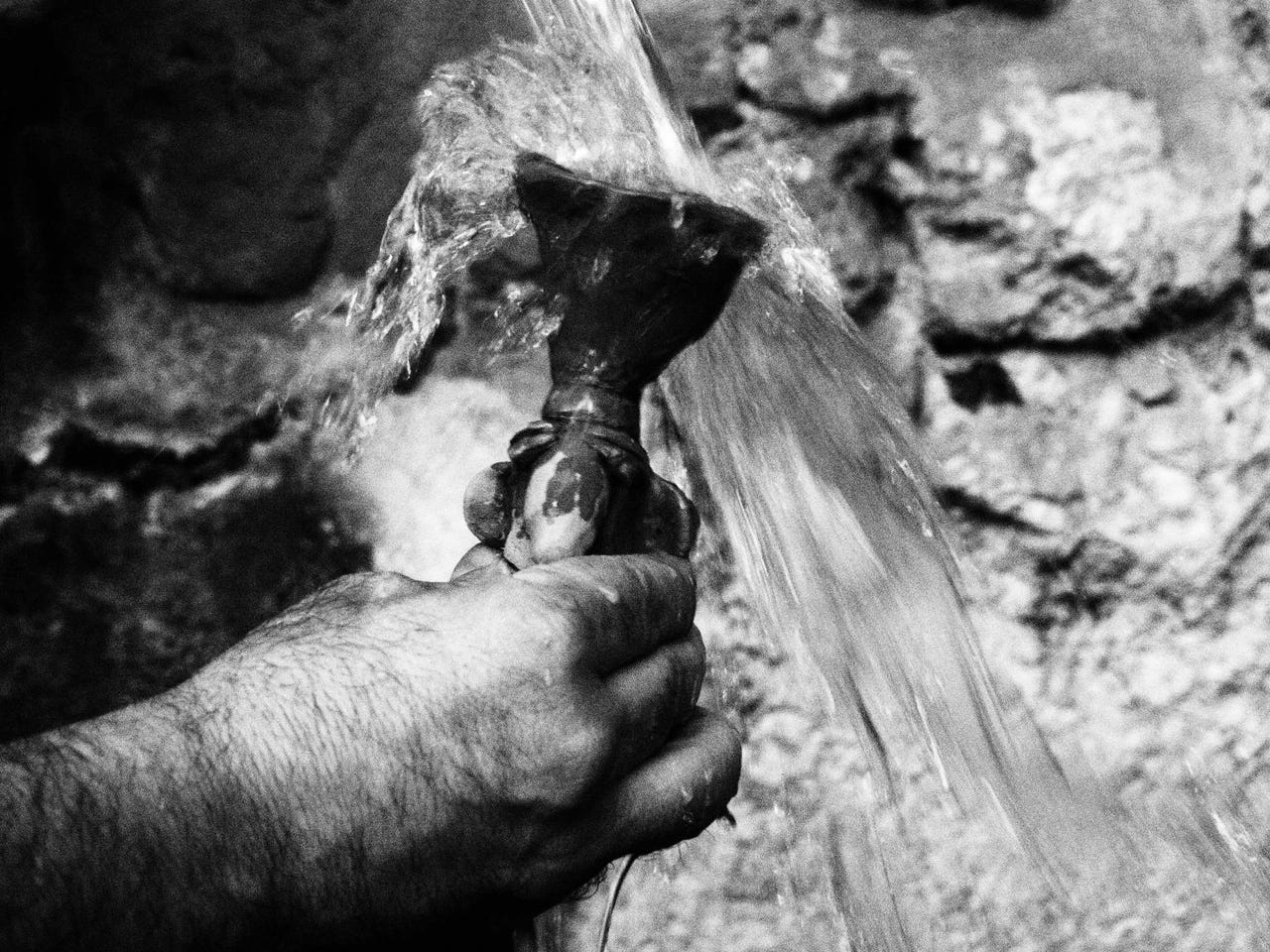Experimental artist adds meteorite to Italian groundwater


To teach tolerance, why not just turn people into human-alien hybrids? Sounds pretty out there, right? Which is exactly the realm experimental artist Jonathon Keats inhabits best.
We've covered Keats' offbeat performative philosophy before, from his quest to save the holocene to his hundred-year exposure camera and his museum of future-altering toys. Keats' mind-bending projects recall a scientist practicing in a David Lynch reality and exhibit a kind of theatrical fatuousness that's at once hyper-logical and bordering on unhinged. Whatever your reaction, his projects always succeed in doing exactly what they set out to do: Make us think about our world and our inextricable involvement within it in new ways.
For his latest project, Keats will bury a meteorite in an Italian town in a way that will have a small influence on local groundwater. To what end? Like any Keats project, the answer comes down to interpretation. In an email to me, Keats started with a story.
In the year 312 CE, a meteor converted the Roman Empire from Paganism to Christianity. Observed by the Emperor Constantine, who was awed by a burst of light likely caused by atmospheric ablation, the stone may have landed near Fontecchio, a small village in central Italy located several miles from a mysterious ancient crater.
"The new religion might have caused some Roman soul-searching, but humanity has hardly lived up to the ideals professed by prophets," says Keats. "With the climate crisis and rampant social injustice, we need a new vision. Cooperation by all will require a transformation of even greater magnitude than Constantine's conversion."
By lugging a meteorite to the town of Fontecchio in his luggage and burying it in a way that will mineralize the water that flows through the town's ancient fountain, Keats maintains that everyone who drinks from the newly anointed Fountains of Tolerance will absorb the minerals, which originated in an asteroid between Mars and Jupiter. As Mr. Keats explains, "These minerals will be incorporated into their bones, making people into alien hybrids."
Alien hybridity is an antidote to xenophobia and prejudice because it transcends political borders, ethnic distinctions, and an anthropocentric worldview. By all being 'other' together, humans can simultaneously enlarge their scope of being, grow closer as a people, and connect more deeply with all life forms here on Earth and throughout the cosmos.
At a dedication ceremony of the first fountain on August 6th, a brass plaque was affixed to the spigot to ensure that all who take the water will do so with the intention of becoming partly extraterrestrial. Fontecchio mayor Sabrina Ciancone delivered a speech explaining the historical significance of the fourteenth-century fountain and proclaiming the political importance of tolerance in the past and present. Mr. Keats also spoke, elaborating that fountains are ideal sites for political change, not only because water is essential to life but also because fountains are inherently communal. Founts of cooperation are all the more significant as global water insecurity amplifies inequality.
"The Fountains of Tolerance will activate what is already latent in fountains but often forgotten," he told a crowd of local residents and guests. "They will be an antidote to the isolated and isolating circumstances of indoor plumbing: a public good in the fullest sense of the word."
Mr. Keats was invited to Fontecchio by a governmental commission led by the Ufficio Speciale per la Ricostruzione dei Comuni del Cratere, as part of a program called Riabitare con l'Arte. Responsible for the reconstruction of the region – which is still recovering from the impact of the 2009 l'Aquila earthquake – the bureau is focused on physical restoration and social renewal.